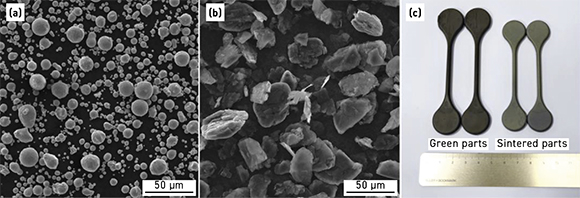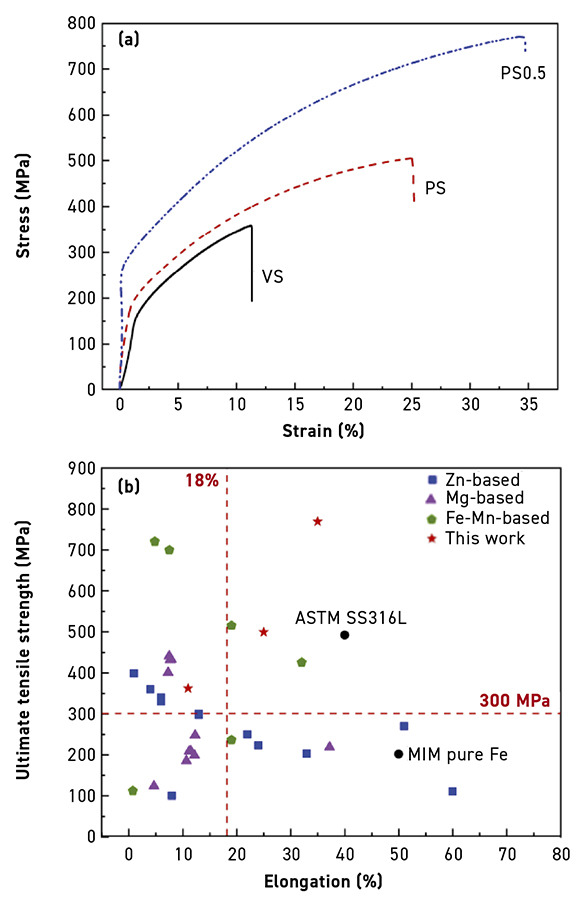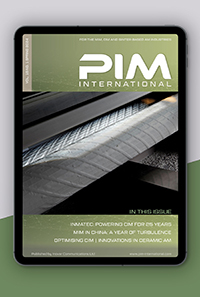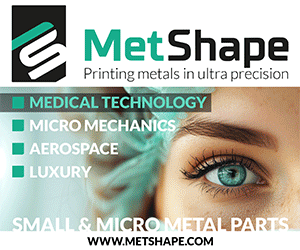Enhanced mechanical performance of MIM biodegradable Fe-Mn alloy with minor C addition
April 28, 2023

Degradable metallic biomaterials are a new family of alloys with the potential for use in medical implants with a temporary function. These alloys are being considered as potential replacements for the corrosion-resistant alloys currently used for orthopaedic, cardiovascular and paediatric implants. The development of iron-based materials has been of particular interest for load-bearing applications, with Mn seen as one of the most promising alloying elements.
Studies have reported that the amount of Mn released by the degradation of FeMn-based alloys in body fluids is much lower than their toxicity level in blood and the body can also rationally metabolise the gradual release of Mn. Meanwhile, the electrode potential of Mn is lower than Fe; the infinite solid solution formed by Fe-Mn has a higher corrosion potential; and, when the Mn content is higher than 29 wt.%, Fe-Mn alloys possess a single austenite phase, improving Magnetic Resonance Imaging (MRI) compatibility. The addition of C can further improve the degradation rate of FeMn-based alloys by forming local galvanic cells and simultaneously improves the strength and plasticity of Fe-Mn alloys.
Research at China’s State Key Laboratory of Powder Metallurgy, Central South University, in cooperation with The Second XiangYa Hospital, also located at the Central South University, Changsha, has shown that Fe-35Mn alloy with the addition of 0.5C has low Mn volatility, high density, and favourable mechanical properties when produced by Metal Injection Moulding. The results of the research were published in a paper entitled ‘Enhanced Mechanical Performance of a Biodegradable Fe–Mn Alloy Manufactured by Metal Injection Moulding and Minor Carbon Addition,’ by Ye Zhang, et al., in Metals, 12, 884, May 23, 2022, 9 pp.
The authors stated that, in their previous work on determining the mechanical and degradation properties of Fe-Mn degradable alloys produced by MIM, it was found that there was still a significant Mn loss (2.25%) due to volatilisation during sintering, the oxygen impurity content is high (0.32 wt.%), and the relative density reached only approximately 93%. The single deformation mechanism and high porosity resulted in relatively poor mechanical properties (tensile strength of 558 MPa and elongation at 10.8%). The present reported work was therefore aimed at introducing and optimising the carbon content in the MIM Fe-Mn alloy, using pressure sintering, and examining the resulting sintered microstructure, mechanical properties, and corresponding mechanical deformation mechanism.
In this study, Fe-35Mn pre-alloyed (D50 = 14.0 µm) and graphite (D50 = 30.8 µm) powders were mixed with a multi-component binder system (60 wt.% Paraffin + 36.5 wt.% High-Density Polyethylene + 3.5 wt.% Stearic Acid) to produce the MIM feedstock, with powder loading at 58 vol.%. Fe-35Mn feedstock was also prepared without carbon addition for comparison of sintered properties. The pelletised feedstock was injection moulded to produce the Fe-35Mn-0.5C green part samples, having a length of 108 mm and a diameter of 3.8 mm, as shown in Fig. 1(c).
A two-step debinding method was used, involving solvent debinding (Dichloromethane, 40°C, 8 h), followed by thermal debinding (argon, 600°C, 1 h). The debound specimens were then sintered at 1200°C for 7 h under a low-vacuum atmosphere (10−1 Pa) or an argon atmosphere using applied pressure of 5 atm. The selection of the sintering temperature and holding time mainly referred to the equilibrium vapour pressure of Mn established by the authors in their previously reported study.
It was found that a small amount of volatilised Mn vapour was continuously evacuated during vacuum sintering, promoting the continuous loss of Mn during the sintering process. However, this problem was avoided during pressure sintering, which dramatically reduces the volatilisation of Mn and ensures the stability of alloy composition. Table 1 shows the elemental content and relative density of the three investigated compositions. As can be seen, the relative density of the pressure-sintered Fe-35Mn with 0.5% carbon addition (PS0.5) reached 97%. The pores of the vacuum sintered (VS) alloy were found to be of irregular shapes, whilst the pores of the PS and PS0.5 alloy pressure sintered in argon were fine and uniform.

Fig. 2 shows that the tensile strength of the pressure-sintered Fe-Mn-0.5C alloy reached 778 MPa, which is a significant increase compared to the Fe-Mn alloy without C, and elongation was increased to 35%. The significant increase in strength and plasticity was attributed to the optimisation of the pressure sintering process and carbon content, which in combination, helped to increase the density.

The authors concluded that the highly dense pressure-sintered microstructure of the Fe-35Mn-0.5C showed uniform austenite phase composition, twinning-induced plasticity, and carbon-accelerated twin growth mechanism, all of which are responsible for its excellent mechanical properties.
Download PIM International magazine


















